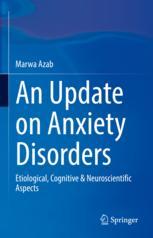Introduction: Worry According to etymonline.com, the word “worry” originally meant “to slay, kill or injure by biting and shaking the throat” in Old English or “to strangle.” These mean- ings were obsolete in English after 1600. This meaning was replaced by “to annoy, bother, vex.” Eventually, worry took on an additional meaning similar to anxiety. Nonetheless, the “choking” and “strangling” original connotation of the word is precisely how some patients with GAD describe their continuous uncontrolled worry. Worry has been more recently defined as “a chain of thoughts and images negatively affect-laden and relatively uncontrollable” (Borkovec et al., 1983). It is a type of negative thinking but very distinct. Pervasive uncontrollable worry is a defining feature of GAD that distinguishes it from other anxiety disorders. It is a defining cognitive feature of GAD. Many researchers championed GAD’s relabeling as “Generalized Worry Disorder.” The relabeling was in serious consideration for DSM-5, highlighting worry as the disor- der’s hallmark (Andrews et al., 2010).
چکیده فارسی
مقدمه: نگرانی به گفته etymonline.com، کلمه "نگرانی" در اصل به معنای "کشتن، کشتن یا زخمی کردن با گاز گرفتن و تکان دادن گلو" در انگلیسی قدیمی یا "خفه کردن" بود. این معانی پس از سال 1600 در انگلیسی منسوخ شد. در نهایت، نگرانی معنای دیگری شبیه به اضطراب پیدا کرد. با این وجود، معنای اصلی «خفهکننده» و «خفهکننده» این کلمه دقیقاً همانگونه است که برخی از بیماران مبتلا به GAD نگرانیهای کنترلنشده مداوم خود را توصیف میکنند. نگرانی اخیراً به عنوان "زنجیره ای از افکار و تصاویر با تأثیر منفی و نسبتاً غیرقابل کنترل" تعریف شده است (Borkovec و همکاران، 1983). این یک نوع تفکر منفی است اما بسیار متمایز است. نگرانی غیرقابل کنترل فراگیر یکی از ویژگی های تعیین کننده GAD است که آن را از سایر اختلالات اضطرابی متمایز می کند. این یک ویژگی شناختی تعیین کننده GAD است. بسیاری از محققان از برچسب زدن مجدد GAD به عنوان "اختلال نگرانی عمومی" حمایت کردند. برچسبگذاری مجدد برای DSM-5 مورد توجه جدی قرار گرفت و نگرانی را به عنوان نشانه اختلال برجسته کرد (اندروز و همکاران، 2010).
ادامه ...
بستن ...
We all worry! We worry about arriving on time, not burning the food we are mak- ing for lunch, or whether we will find another job. Daily life is replete with oppor- tunities to worry. But not everyone who experiences worry develops clinical anxiety. A person can be a high worrier but still not fulfill the criteria for GAD. How can nonclinical worry be distinguished from the clinical worry symptoms of generalized anxiety disorder? Studies that compared high worriers and patients with GAD found notable differences. Compared to high worriers, people with GAD had higher scores on trait anxiety, depression, more negative beliefs about worry, a greater range of worry topics, and more frequent and severe negative thought intrusions (even when objectively assessed by a rater). In one study, clients in treatment for GAD were compared to community volun- teers who have the same propensity to worry but did not meet the criteria for GAD. Both groups had to engage in a worry task consisting of three phases: a 5-minute period where participants were instructed to focus on their breathing, 5 minutes of worrying, and a 5-minute post worry breathing focus period. Participants were interrupted several times to report if their attention was focused on their breathing or other thought intrusions. If they reported a thought intrusion, they indicated its valence—positive, negative, or benign—and provided a description. These descriptions were rated by an objective experimenter who also assessed their valence. Both groups completed many assessments such as the Generalized Anxiety Disorder Questionnaire, Penn State Worry Questionnaire (to ensure that they are similar), State-Trait Anxiety Inventory-Trait, Beck Depression Inventory, Attentional Control Questionnaire, and Metacognition Questionnaire
ادامه ...
بستن ...










